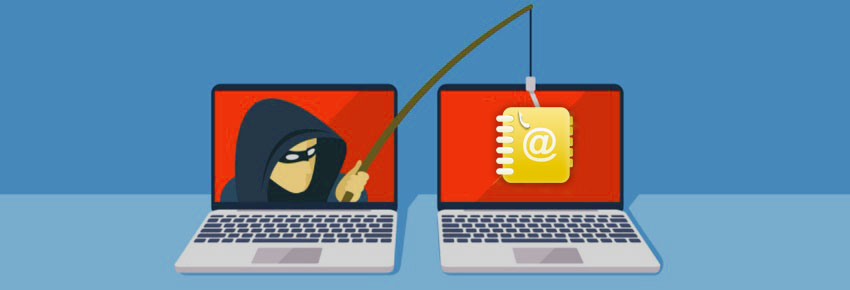If you receive a strange email from your own email address or from an email address that does not actually exist, it does not necessarily mean that your account has been hacked. A spammer/hacker can spoof any email address in the world, and it’s not hard to do. Email spoofing is the forgery of an email header so that the message appears to have originated from someone or somewhere other than the actual source. Email spoofing is a tactic used in phishing and spam campaigns because people are more likely to open an email when they think it has been sent by a legitimate source e.g. like your own email address.
Let’s use a concrete example.
Your address book includes entries for your customers, Faheem, Nadeem and Raza. Further your customer Nadeem’s address book includes entries of Zahid, Usman, Wahab and your own email address. Nadeem’s machine becomes infected with malware (which collects information from his address book). Now spammer can send the spam emails by placing each name and email address of his address book in “From” and “To” fields through spoofing to land into inboxes and to spread this virus.

Here’s how they do it, and how you can protect yourself.
Spammers have been spoofing email addresses for a long time. Years ago, they used to get contact lists from malware-infected PCs. Today’s data thieves choose their targets carefully, and phish them with messages that look like they came from friends, trustworthy sources, or even their own email account. Spammers also use different sources to collect email addresses, including hacking databases of famous websites, harvesting email addresses from public webpages, or even purchasing lists of email addresses from one another. If someone accuses you of sending spam, and you are positive you did not do it, you have very little recourse other than to try to educate them about how viruses work. You may point them at this article if you like. But be clear, your machine is not necessarily infected with malware, nor is your account necessarily compromised. It’s some third party — the spammer — making all this happen. (Identifying that third party is difficult, which is why spammers use this technique.)
There is nothing much you can do to stop this completely but one possible solution is to enable SPF and DKIM. It sounds bit technical but it is quite easy while setting up through cpanel as follows.
(Email > Authentication > DKIM/SPF > Enable).
DKIM
DKIM is a means of verifying incoming email. It ensures that incoming messages are unmodified and are from the sender from whom they claim to be. This feature works to prevent incoming spam messages.
SPF
The SPF system allows you to specify servers and IP addresses that are authorized to send mail from your domain(s). This feature works to prevent outgoing spam messages.
If you have any question regarding this topic or having any trouble to setup DKIM and SPF then you can contact us at helpdesk @ xperts.net.pk

